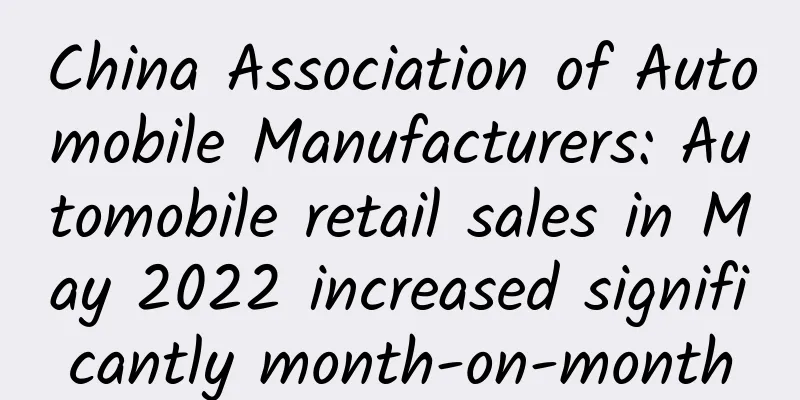China Automobile Dealers Association: Analysis of China's automobile imports from January to November 2022

|
Although the domestic luxury car market is generally good, China's import volume has continued to decline at an average annual rate of about 10% from 1.24 million units in 2017 to 930,000 units in 2020. Although the import volume of the imported car market in 2021 was affected by the shortage of chips, the import volume was 930,000 units, but it still increased by 0.1% year-on-year compared with 2020. Continuing to be affected by the shortage, the import volume from January to November 2022 reached 820,000 units, a year-on-year decrease of 6%, and a slight decrease compared with the import volume from January to November 2019. In November, the import volume of imported cars was 69,000 units, a year-on-year decrease of 15%. The core driving force of the import market growth is still the consumption upgrade growth space of passenger cars. The overall trend of luxury cars and imported cars is very good. With the policy of halving the purchase tax on cars below 2 liters, the structure of imported cars will also adjust rapidly. If the shortage of imported cars is quickly improved, some imported cars will also achieve high growth in the future. 1. Overall trend of China's automobile imports 1. Characteristics of the growth rate of automobile imports After a sharp decline in the global economic downturn from 2013 to 2015, the import growth rate stabilized slightly in 2016-2017, continued to decline from 2018 to 2020, and stabilized slightly in 2021. The recovery trend of imported cars from January to November 2022 was affected by the epidemic, and the current monthly import volume remains at an average of about 80,000 units. Imports from January to December 2021 reached 930,000 units, a growth rate of 1%, a strong performance. Imports from January to November 2022 reached 820,000 units, a decrease of 6%, maintaining the downward trend since 2018. The imported car market stabilized in 2021, with annual imports reaching 930,000 units, an increase of 1% year-on-year. Imports from January to November 2022 reached 820,000 units, down 6% year-on-year, a significant recovery from imports from January to November 2020. In November, 69,000 vehicles were imported, down 15% year-on-year. November's performance was weak due to a high base. Considering the current international supply shortage caused by the epidemic and chip shortage, there is still great potential for future increases in imported vehicles to drive full-year growth. 2. Monthly trend of vehicle imports Imported passenger cars returned to normal after the epidemic. From the monthly trend, imports in recent years still show seasonal characteristics, showing a high in summer and a roller coaster trend of peaking and falling. Imports from January to November 2022 were slightly lower than those from January to November 2021, mainly due to a sharp drop from May to June and insufficient market supply. Imports from August to November this year grew rapidly. Last year, the base was low due to chip shortages, but this year's imports have recovered well. 3. Structural characteristics of imported complete vehicles The import vehicle market was relatively stable from 2017 to 2019. In 2021, 930,000 vehicles were imported, a significant increase compared to 2020. In the past two years, the import of traditional trucks and buses has declined, especially the import of heavy trucks and medium trucks, which reflects the completion of the release of demand after the epidemic. However, the import of light trucks and pickups is strong, reflecting the high market recognition of American pickups. Passenger cars account for an absolute majority of 99% of the automobile import structure. Among them, the import of four-wheel drive SUVs was weak in November, while the import of commercial vehicles in November was relatively strong, especially the import of trucks, among which pickup trucks were the strongest. 4. Structural characteristics of new energy vehicle imports The market for imported passenger cars powered by traditional fuel has declined significantly, while imported pure electric passenger cars have performed strongly, and diesel cars have also rebounded. The proportion of diesel trucks in trucks has decreased, while the proportion of gasoline trucks has increased significantly. The import performance of high-end pickup trucks improved from January to November 2022. The new energy passenger vehicle market has performed relatively strongly recently, and the imported bus market has also performed relatively well. Due to the import structure dominated by passenger cars, the proportion of diesel vehicles among passenger cars has continued to decline in recent years, and the proportion of diesel vehicles has dropped to less than 1%. 5. Characteristics of the displacement structure of imported complete vehicles The displacement of imported passenger cars is concentrated in gasoline models below 2 liters, accounting for half of the total passenger car imports. However, the recent strong import trend is for large-displacement imported cars above 2 liters, and the market has a strong trend towards high-end. 6. Characteristics of countries importing new energy vehicles The import volume of new energy vehicles was large from 2017 to 2019, but the decline in pure electric vehicles caused by Tesla's domestic production in 2020 was large. In 2021, pure electric vehicles declined significantly due to the impact of Tesla's domestic production, but the trend of new energy development has led more companies to import new energy. The recovery and growth of plug-in hybrid and pure electric vehicles from January to November 2022 reflects the trend of overseas new energy transformation. 2. Overseas Automobile Market Structure 1. Import characteristics by country
From 2017 to 2019, car imports from Asia grew rapidly, car imports from Europe remained stable, and car imports from North America showed a downward trend. The performance of imported cars recovered after the epidemic in 2020 was differentiated, and European imported cars performed relatively strongly in 2021. This year, the recovery trend of imported cars is obvious. The scale of imports from Japan in Asia improved in November, while the performance of imported cars from the United States and other countries was average. From January to November 2022, the main countries with relatively good performance in imported cars are Germany, Japan, etc., while the import volume of Austria, Slovakia, Mexico and other countries is very good, but the import volume of the United States in November fell significantly year-on-year. Recently, the import volume of cars in the United States has been poor, while some European imports have grown well year-on-year. The import share of major countries remained above 99%, and the recovery in markets such as Mexico was more obvious. 3. Automobile Market Sales Volume 1. Overall sales volume of imported vehicles At present, the sales performance of imported cars is slightly worse than that of domestic luxury cars. In 2021, the sales volume of imported cars reached 940,000 units, a decrease of 6% compared with the sales volume in 2020. In November, the impact of the epidemic on the retail sales of imported cars was still greater than that of domestic cars. From January to November 2022, the sales volume of imported cars was 756,000 units, which was significantly lower than that of 2021 and relatively weaker than the performance of domestic cars. Due to the shortage of goods in Japan and Europe, domestic cars are stronger, which is also a reflection of the advantages of the domestic industrial chain. 2. Characteristics of imported car brands At present, the growth of imported cars is mainly driven by the growth of luxury cars, and the proportion of luxury cars has increased from 77% in 2017 to 91% in January-November 2022. The import proportion of super luxury cars has increased slightly, reflecting that the purchasing power of super high-end consumer groups has actually increased. 3. Trend characteristics of imported car brands At present, the most powerful imported car brand is Lexus. In recent years, Lexus's share has continued to grow. In 2019, it became the number one imported car brand, and it remained the number one from January to November 2022. BMW's import performance in November was very good, and Mercedes-Benz was surpassed by BMW. However, Toyota's imports are very poor, and have dropped sharply in the past two years. The performance of imported cars from Mercedes-Benz and BMW was relatively stable, with BMW performing relatively well in November. The sales of imported cars from Porsche continued to grow rapidly, making it a relatively strong brand among European imported cars. Tesla's imported cars accounted for 4.1% in 2019, and then declined rapidly. Currently, domestically produced cars have become Tesla's main force, and Tesla's exports are very strong. 4. Trend characteristics of imported car models From January to November 2022, the overall luxury car trend in China was relatively weak, among which the best sales performances were BMW X5, Lexus ES, Porsche Cayenne, Mercedes-Benz GLB and Mercedes-Benz GLE. Lexus' market share performance this year is relatively weak. Since Japan's epidemic control was relatively good in 2022, Lexus' supply is relatively good, but the performance of Lexus NX is weak, resulting in overall weakness. Porsche has been stronger recently. |
Recommend
Can the star system closest to the sun become humanity’s future interstellar home?
Can the star system closest to the sun become hum...
Why can’t Douyin influencer promotion be charged based on results?
Whether it is performance advertising or brand ad...
Marketing: Apple says no one dares to be number one?
John Sculley, this seemingly unfamiliar name, act...
How to bring about conversions by building an operation system and channel diversion?
1. What is operation in your mind? The operation ...
Notice from the Ministry of Education: College entrance examination candidates are only allowed to enter the examination site if their body temperature is below 37.3℃!
The number of people who registered for the natio...
[Girls' Emotions] How to become a charming goddess? From 0 to 1, we will teach you how to improve your temperament and taste
[Girls' Emotions] How to become a charming go...
Guo Xian's video tutorial on "Chinese Medicine Internal Medicine", clinical experience, easy to understand
Training course video lecture content introductio...
Cambridge's cool new invention: Roll up a piece of cloth and it becomes a display screen!
Written by: Wu Tingting Editor: Kou Jianchao One ...
The risk of cancer is more than 10% higher, and it is even more serious for those with cardiovascular disease. Obese people should pay attention!
Only those who are losing weight can understand t...
Are feet a "monitor" of blood sugar? If your feet show these 6 symptoms, it may indicate that your blood sugar is above the standard
The feet can be said to be a magnifying glass for...
A comprehensive article on user retention!
Faced with the current situation of difficulties ...
How to analyze bidding data? How to conduct data analysis for bidding promotion?
For bidding promotion, all effect optimization mus...
15-day short video gold mining camp: reveal the secrets of making money with short videos and start a new sideline business with a monthly income of over 10,000 yuan
15-Day Short Video Gold Rush Camp: Uncover the se...
Pinduoduo Money-Saving Monthly Card: A New Way to Play as a Paid Member
Paid membership is no longer a new model. Amazon ...
Compared with fuel vehicles, do new energy vehicles have a higher rate of spontaneous combustion in collisions? How to prevent it in hot weather?
Spontaneous combustion of vehicles has always bee...









